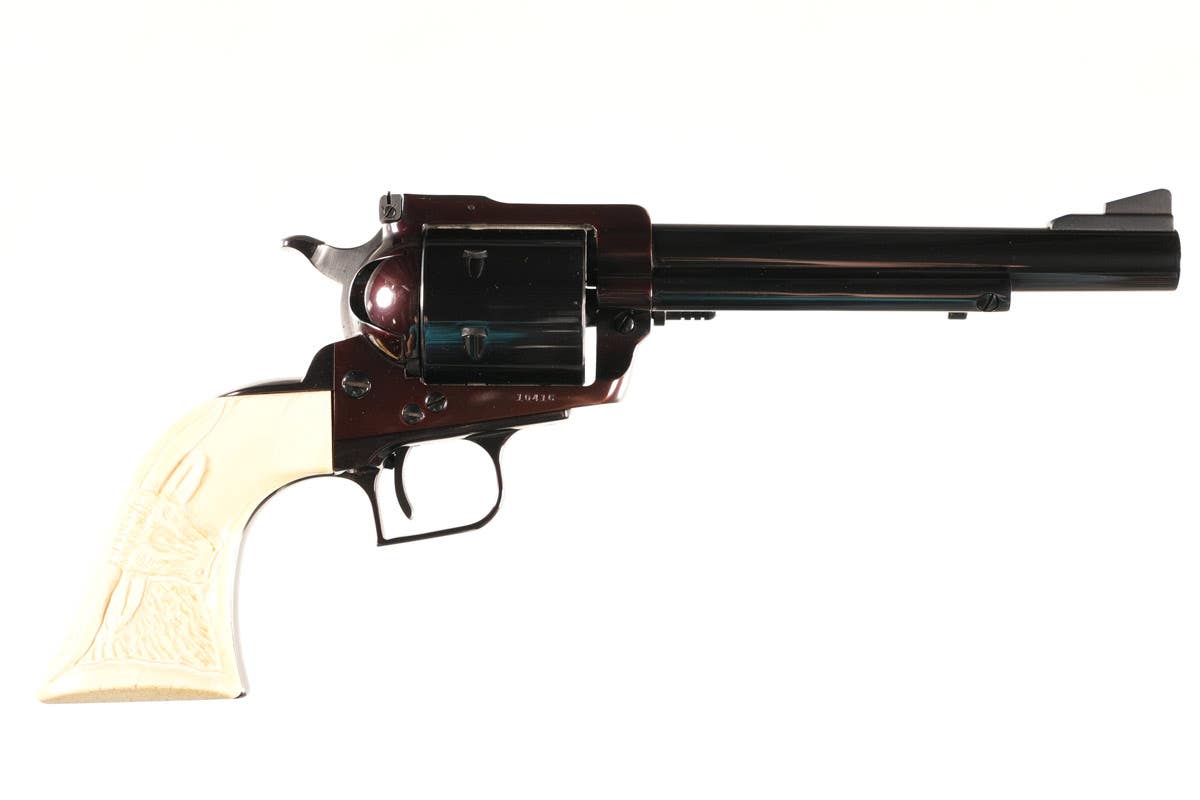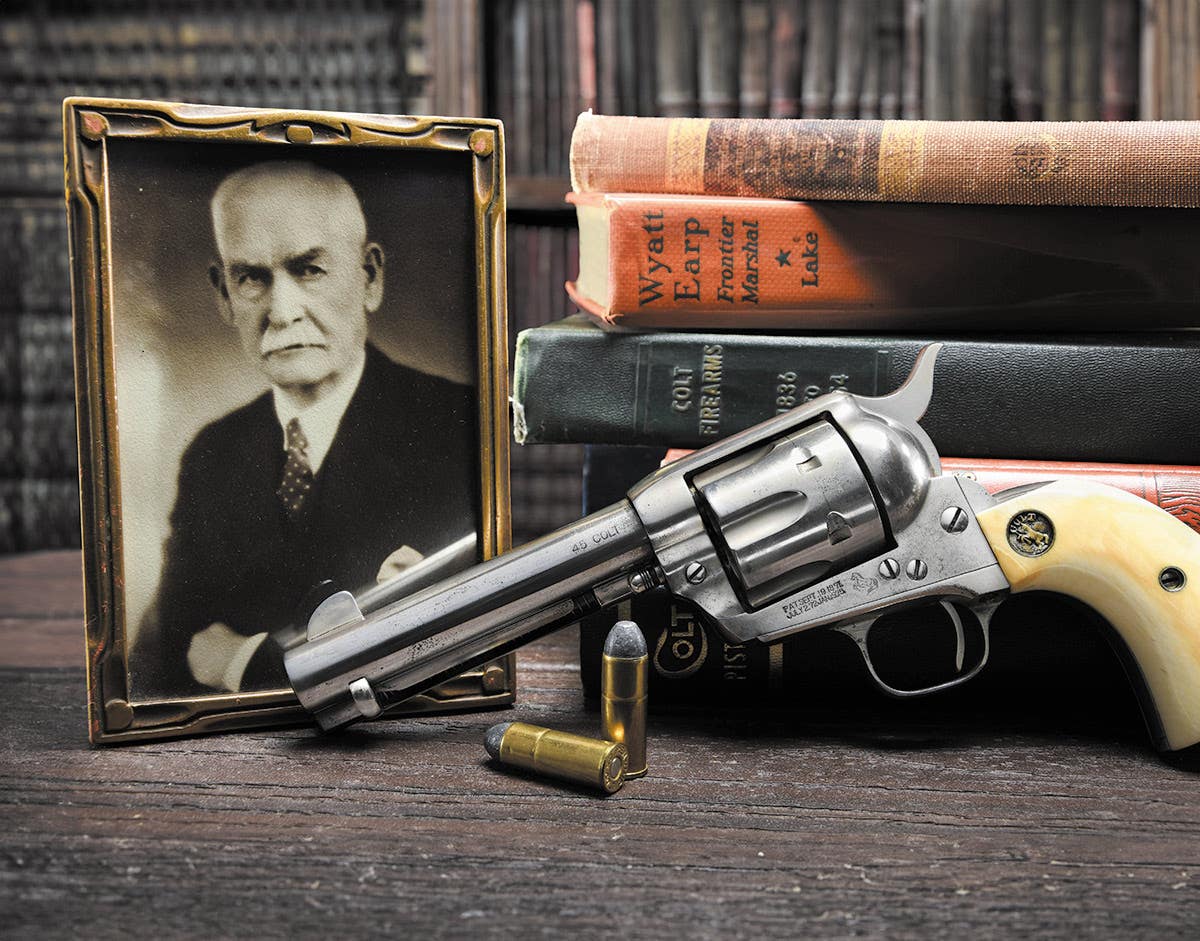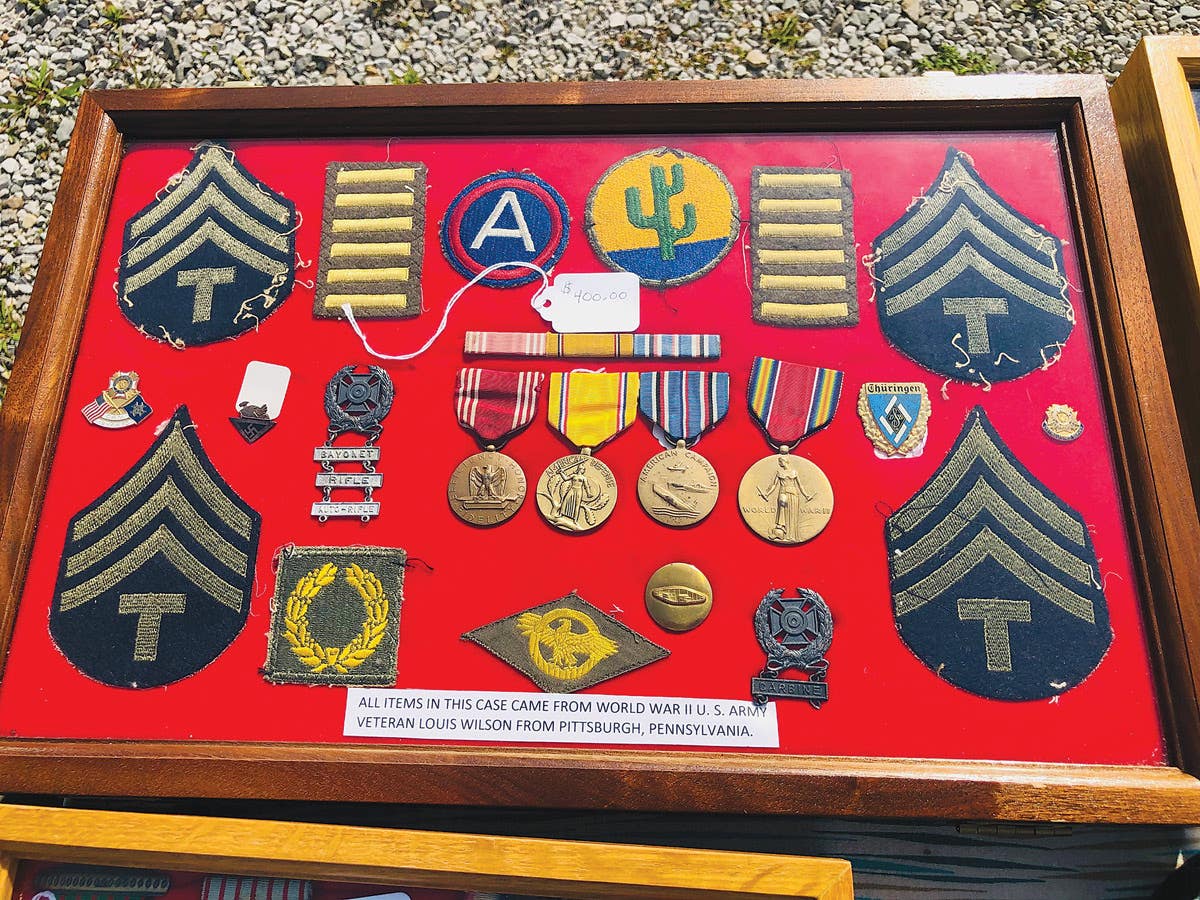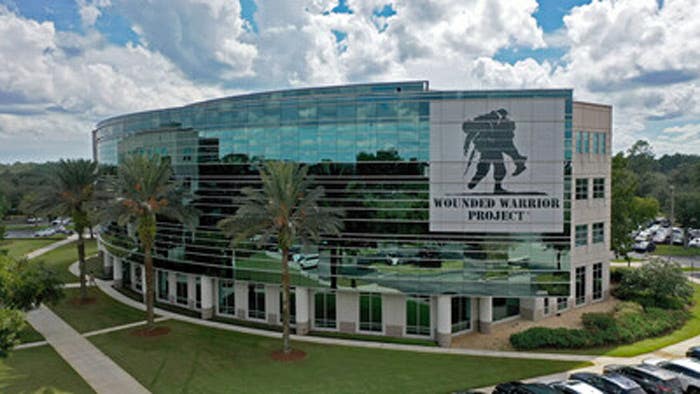Militaria Mindset: MT Talks with Jeff Warner
An interview with an author, collector and militaria prop provider
August 12, 2010
By Andrew L. Turner
The year “1969” was written on the faded color photograph of a kid wearing a WWWII M1 helmet. His father was a veteran of WWII and Korea and had Japanese rifles and pistols here and there about the house, souvenirs of his time in the Pacific. The boy would marvel at his father’s Navy service stories no matter how many times he had heard them before. As the case with every militaria collector, Jeff Warner was on his way into the hobby and didn’t even know it.
“When people ask me what year I began collecting, I say ‘1969’ but only because of the date on that photograph,” said Warner, author of the US Navy in WWII Series, an incredible six volumes of high quality collector reference published by Schiffer Books. He is also the owner of “GI Concepts” (www.giconcepts.com) – a specialty company providing film and television professionals with militaria related costumes, props, and consultation.
Fledgling collectors may not believe there were days when sporting goods stores sold military items for pennies on the dollar of their value today. Warner’s father was an outdoorsman, and embedded in his son’s memories are camping trips spent sleeping under USMC WWII camo shelter halves, and wrapped up in WWI army blankets. “We’d wear B-3 sheepskin bomber jackets when it was really cold,” he said. “Amazing to think of it now but that’s how it was – at the time, there was absolutely no concept in anyone’s mind of the stuff having any value at all.”
As he grew older, he began to recognize the items worn by actors in war films on television. “Without any books or other reference materials as a guide, I assembled uniforms, packs, and equipment as I saw them worn in movies,” he said. “By the age of 10, I was already the neighborhood quartermaster. I routinely outfitted not only myself but all of my friends as well for all-out combat, usually over a cardboard fort in a nearby vacant lot.” His parents humored him and would provide the .69 cents or a buck-and- a-half if he needed an extra helmet or pair of leggings.
“I was also fortunate to live in southern California where there were always a number of military surplus stores, the closest being two blocks from our home,” said Warner. “In the early to mid 1970s, surplus stores would sell fixed bale helmets with a liner for $1. Most U.S. web gear, packs, ponchos, boots, .45 holsters, and other pieces of gear were usually in the .49 cent to $1.50 range. I was always fascinated with how military things were made and how they worked; figuring out all the elaborate snaps, straps, buckles, etc. and how the different equipment items fit together was like putting together pieces of a puzzle.”
While the price of the gear was tolerable at the time (to say the least!), the sentiment towards the military was not. “Younger people today don’t realize the extent of the anti-military sentiment and how prevalent those feelings were in the 1970s,” he said. “The Vietnam War had just ended at the height of the anti-war movement. It was the time of Nixon, Watergate and Led Zeppelin. No one I knew at that time had any interest in anything military. I kept my hand in collecting but didn’t dare talk about it with anyone.”
1977 saw Warner enrolled in the Southern California Military Academy at Signal Hill, one of a chain of Brown Military Schools located throughout the U.S. “Going to military school was fine, “he said. “I enjoyed my time there, the only drawback was, away from school I was branded a geek and a dork because I had to keep my hair short. That and the fact there were no girls . . .”
While styles and sentiment changed from the ’70s to the ’80s, the price of militaria stayed at status quo. “Salvation Army and Goodwill shops were all abundant with military items for sale at prices not much higher than I remembered as a kid, Warner said. “I was an employed adult now and had discovered fertile ground with ‘easy pickens’ -- no longer did I have to ask my parents or search under the couch cushions for money to go to the surplus store!” Warner wasn’t the only one interested, the hobby was exploding.
“Military reference books and magazines began to appear and for the first time in my life, I realized that there were other people who shared my interests,” he said. “Gun shows, ASMIC meetings, flea markets . . . the 1980’s turned out to be the best decade for collecting military items for me.” Soon he discovered the textile reclamation centers, or “rag mills” in the Los Angeles area. “These are giant warehouses where unsold, used and secondhand clothing are collected in preparation for the recycling process,” he said. “I would buy military uniforms tied up like bales of hay and sold by the pound. This treasure hunt always proved to be a great source of interesting items.”
In 1985 he joined the re-enacting group California Historical Group or “CHG”. “I remained an active member and occasional board officer for the next 20 years,” he said. “I ultimately left for a number of reasons, but I couldn’t get past one particular paradox: the more I tried to make the re-enacting experience realistic, the more un-realistic it became. I don’t want to knock re-enacting in any way, it’s a great hobby and something everyone with an interest should try. In my case, I felt that 20 years was enough.”
While in the CHG, he was hired as an “extra” in a few low budget films and television productions. Prior to the CHG he had spent four years at the Focus Institute’s film school but didn’t immediately set out on a career in that field. “After acting in a few small roles and bit parts, I saw how the process could be streamlined and how I could put some of my schooling to work,” he said. “In 1990 I started ‘GI Concepts’. Rather than a production company hiring a military technical advisor, a costumer, and a gun wrangler—from three separate sources—one call to my company could provide all three and more.” By that time Warner had a sizeable personal inventory of U.S. WWII uniforms and equipment, he could count on 20 or 30 other re-enactors within the CHG as extras, and had the contacts for vehicles, gun rentals, and other resources.
GI Concepts led to a number of widely varied projects and pressed his “hobby” into diversification. “My main interest had always been U.S. WWII military items but that kept me in a rather narrow niche,” he said. “Eventually, I was able to provide props, costumes, and technical advice to include nearly any nation and any conflict including the Revolution, Civil War, WWI, WWII, Korea and Vietnam into the Gulf War and today.”
In the beginning, Warner utilized original WWII uniforms in the process, but found it more practical to use reproductions as they became more and more readily available. “GI Concepts continued on as it had but with reproductions,” he said. “I reserved the authentic items as an archive and for reference only.” Warner has worked with more than television and film outfits. “I’ve worked with action figure and toy companies, model makers, sculptors, local live theaters, schools, magazines, photographers, modern fashion designers including All American Apparel and Ralph Lauren,” he said.
Warner had the honor of meeting and working with celebrities from the golden age of Hollywood: Charlton Heston, Douglas Fairbanks Jr., Gene Aurty and Ann Miller and today’s celebs like R. Lee Ermy and Tom Cruise. “I do believe I was most fortunate to have met and talked to so many WWII Medal of Honor recipients including Joe Foss, Mitchell Paige and Walt Ehlers,” he said. “Equally unforgettable events would include wading ashore on Red Beach in complete WWII USMC uniform and gear on Tarawa, Betio Atoll, exactly 50 years to the day after the battle there; flying from Long Beach to Burbank in a B-24 Liberator at an altitude of 25 feet above the ocean with a B-17 along side; and live firing a .50 caliber Browning machine gun from the nose of a B-17, while wearing all the sheepskin flying gear.” He’s gone to sea on the WWII Liberty Ship SS Lane Victory and stormed the beaches along Lake Michigan in a D-Day recreation he refers to as “almost frightening.”
Collecting, re-enacting and working in the TV and film industries has provided me the opportunity to do so many extraordinary things with regard to military history,” he said. “It’s impossible to single any of them out as the most memorable.”
Enter the author. “After the influx of all the good military reference books beginning in the late 1980’s, I realized one glaring omission: no one had published any defining photo essay books about the U.S. Navy in WWII,” Warner said. “The Third Reich, U.S. Army, USMC, and the Air Corps had all been thoroughly and repeatedly covered in a number of ever increasingly good books.” With no background for writing, Warner began the journey of adding yet another area of expertise to his already impressive resume. “I simply assembled all of the collective material I gathered about the Navy in WWII and organized it into categories,” he said. “Categories turned into chapters and chapters turned into volumes as the project grew to an almost overwhelming size and scope.” After spending five years on a one-year project, the “US Navy in WWII Series” went to print in six separate volumes published by Schiffer. Financial rewards are seldom an outcome of publishing militaria related reference books. “I have been repaid a hundred fold with all of the compliments, positive reviews and praise I’ve received since their release,” he said. Notwithstanding the comparatively meager royalties, the positive reception my books continue to receive made it all worthwhile.”
Warner’s military history emersion continued to expand from there. “Beginning in 1991 and coinciding with the 50th anniversaries of WWII events, I set out to visit many of the actual battle sites of both the Pacific and European Theaters,” he said. “Traveling with Valor Tours and accompanied by scholars, WWII veterans and the military, I surveyed the sites as a battlefield archeologist.” Beginning with Pearl Harbor, Hawaii on December 7th, 1991, he went on to visit historic sites in Tarawa Atoll, Saipan, Tinian, Majuro Atoll, Johnston Atoll, Iwo Jima, England, Normandy, France, Belgium, Luxembourg and Germany. “Visiting the actual sites where so many historic events took place gave me a deeper insight and greater appreciation for history and what collecting truly represents,” Warner said.
He has never been in it for the money. “In all of the forty-plus years that I’ve been collecting military items, I can count on both hands how many items I’ve ever sold,” he said. “I created my business to exploit my knowledge, experience and resources and also to provide a service. I’m not casting aspersions against any of the dealers, I simply never had any interest in sales or selling things — and I’ve discovered I’m particularly bad at it.” He said collecting was and continues to be a special interest centered around history and the surviving tangible items. “Most all of the military things we own have survived their original owners and if we’re lucky they will survive us as well, said Warner. “I’d like to think I’ve provided preservation for my military things and I trust they will be passed onto equally responsible owners in the future.” But nothing in Warner’s collection is for sale. “I have equal and unprejudiced concern for the preservation of all military things, whether it is a $1 first aid kit or a $5,000 flying jacket, both are of equal historical significance to me,” he said. “If tomorrow my entire military collection was worth no more than a dollar, it would have no less value in my eyes than it does today.”
To learn more about GI Concepts visit www.giconcepts.com and go to www.schifferbooks.com for information about the US Navy in WWII Series.
YOU MAY ALSO BE INTERESTED IN:
*Warman's World War II Collectibles
*Warman's Vietnam War Collectibles
MORE RESOURCES FOR COLLECTORS
*Great Books, CDs & More?
*Sign up for your FREE email newsletter
*Share your opinions in the Military Forum







